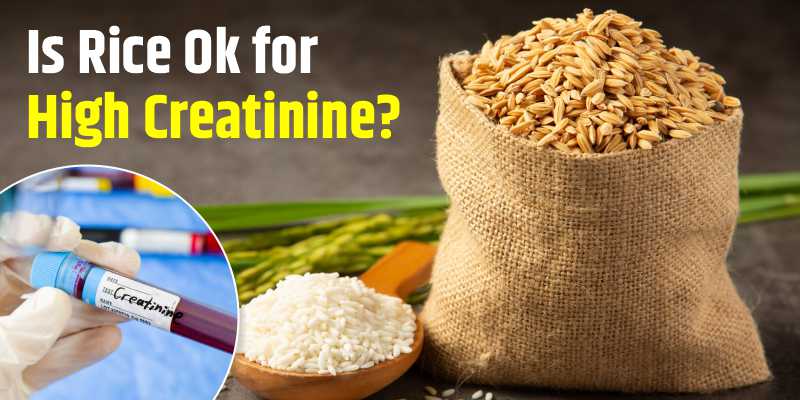
If you’ve been told you have high creatinine levels, I bet your first thought was, Uh-oh, what now? And if you love rice – as most of us do – the next question is probably, Is rice OK for high creatinine? It’s a valid concern, especially when doctors advise watching what you eat. In this blog, let’s dive deep into the link between rice and creatinine levels. Spoiler alert: you don’t have to say goodbye to rice just yet!
Before we get to rice, let’s first understand what high creatinine levels mean. Creatinine is a waste product that your muscles generate during regular wear and tear. Normally, your kidneys flush out this waste through urine. However, if the kidneys aren’t working well, creatinine levels can rise, signaling potential kidney problems.
If you’ve been diagnosed with high creatinine, the key is managing your diet carefully. Foods high in protein (like red meat or dairy) can contribute to more creatinine production. This raises the big question.
The good news is, yes, rice is generally considered safe for people with high creatinine levels, but let’s dig into what may be the reason behind it:
Unlike meat or legumes, rice has minimal protein. Since excess protein can put stress on your kidneys and increase creatinine levels, eating rice won’t worsen your condition. In fact, many kidney-friendly diets recommend rice over protein-rich grains like quinoa or lentils.
People with high creatinine levels often experience fatigue, so it’s essential to have a steady source of energy. Rice, especially white rice, is rich in carbohydrates, providing quick and clean energy without overloading your kidneys. This makes rice a great addition to a low-protein diet.
Ah, the classic health dilemma – white or brown? When it comes to high creatinine levels, white rice is usually the better option.
White rice is lower in phosphorus and potassium, two minerals that are often restricted for people with kidney issues.
Brown rice, although healthier for the general population, contains more phosphorus and potassium. If your kidney function is compromised, excess levels of these minerals can be harmful.
So, if you're wondering, Is rice OK for high creatinine?, white rice is the safer bet for your kidneys.
Moderation is the magic word! Too much of anything – even rice – isn’t ideal. A cup of cooked white rice can easily fit into a kidney-friendly diet. Combine it with vegetables low in potassium to keep things balanced.
Here are a few ways to ensure that the rice you eat stays gentle on your kidneys:
Rinse your rice well before cooking – This reduces some of the starch and potential toxins.
Pair rice with kidney-friendly vegetables – Think along the lines of steamed cauliflower, carrots, or lettuce.
Avoid salty accompaniments – Sodium overload is the last thing you need! Opt for mild seasonings like lemon juice or fresh herbs.
Although rice is safe, a little variety never hurts. Here are some other carbohydrate options you can explore:
These alternatives provide more options while keeping your creatinine levels in check.
To sum it up, rice is perfectly fine for people with high creatinine levels, especially if you choose white rice over brown. It’s a low-protein, kidney-friendly carb that won’t stress your kidneys. Just remember to eat it in moderation and pair it with nutritious, low-potassium veggies to get the most out of your meal.
So, don’t worry! You don’t need to bid farewell to your favorite bowl of steaming hot rice. With a mindful approach, you can still enjoy it while keeping your creatinine levels in check. After all, food should be comforting, not stressful, right?
And there you have it – the answer to Is rice OK for high creatinine? You now know that a little rice in your diet can do more good than harm. Just follow the golden rule: eat smart, stay balanced, and keep your kidneys happy!
Second Floor, 77, Block C, Tarun Enclave, Pitampura, New Delhi, Delhi, 110034